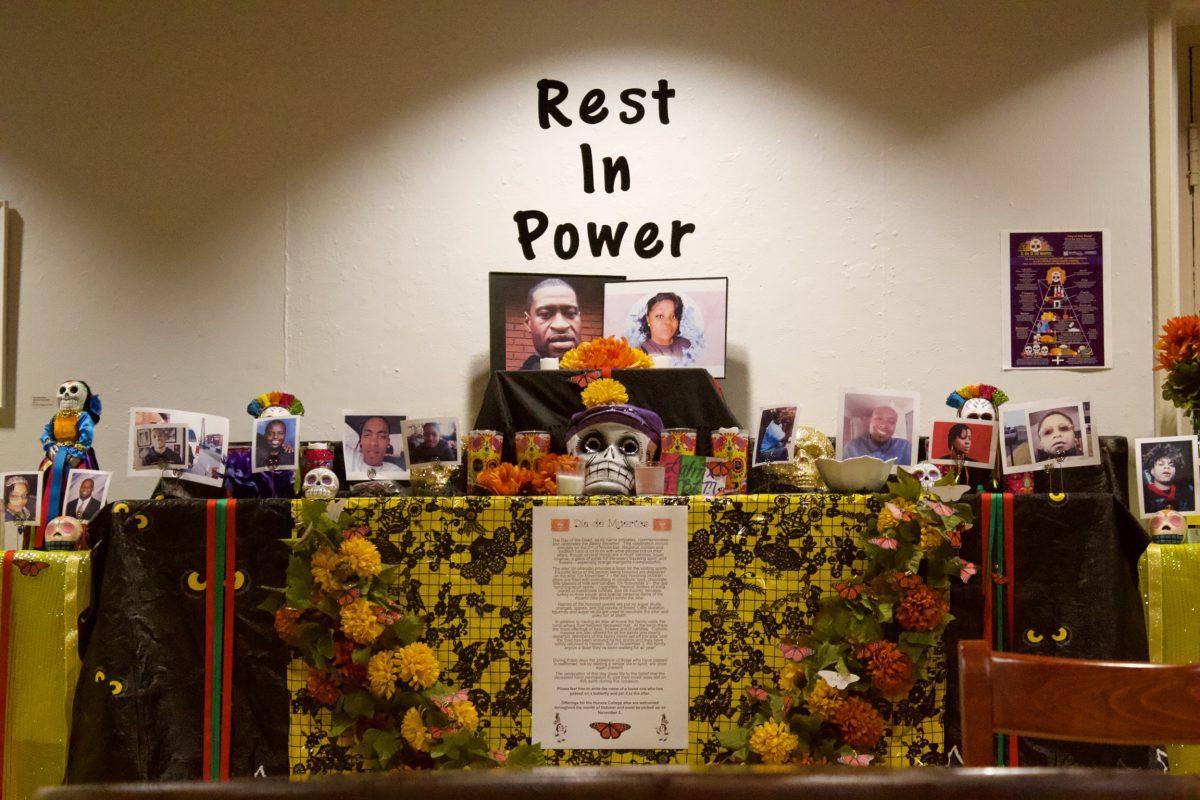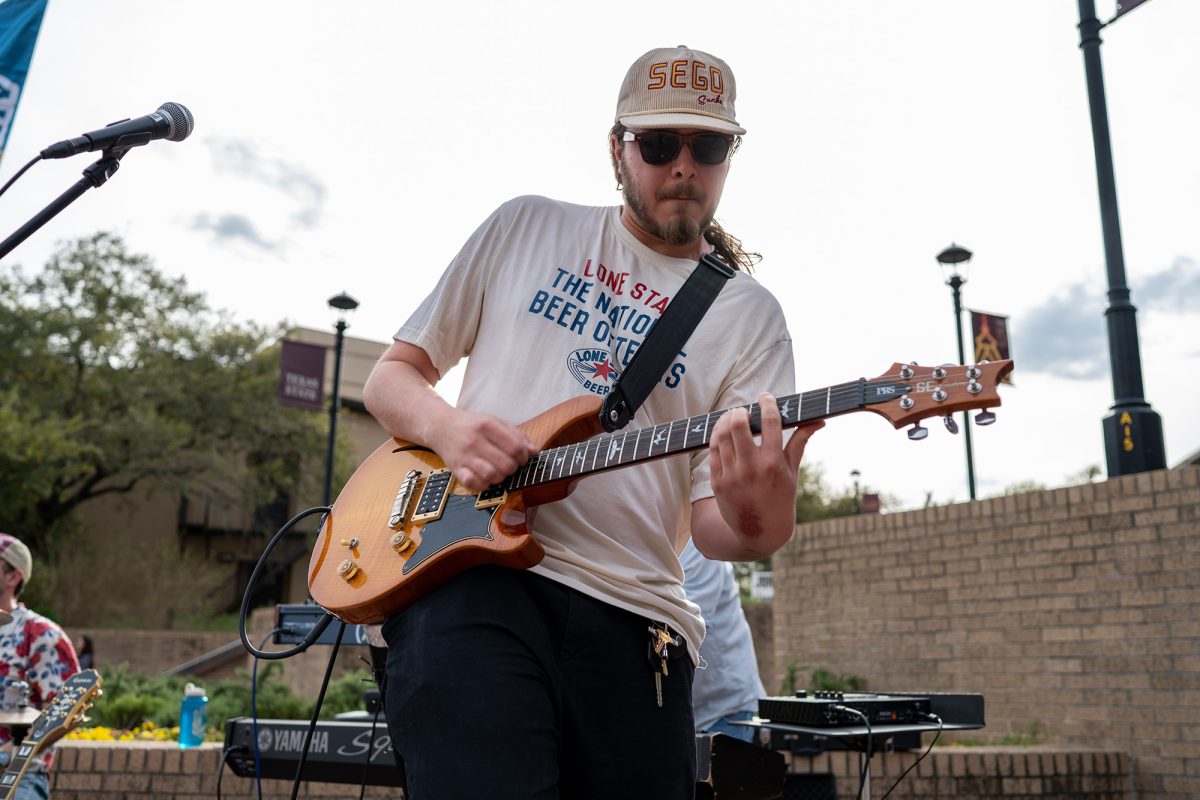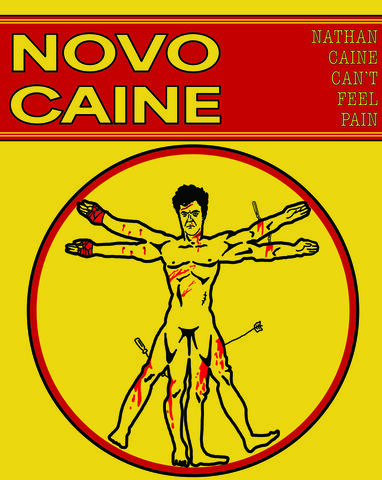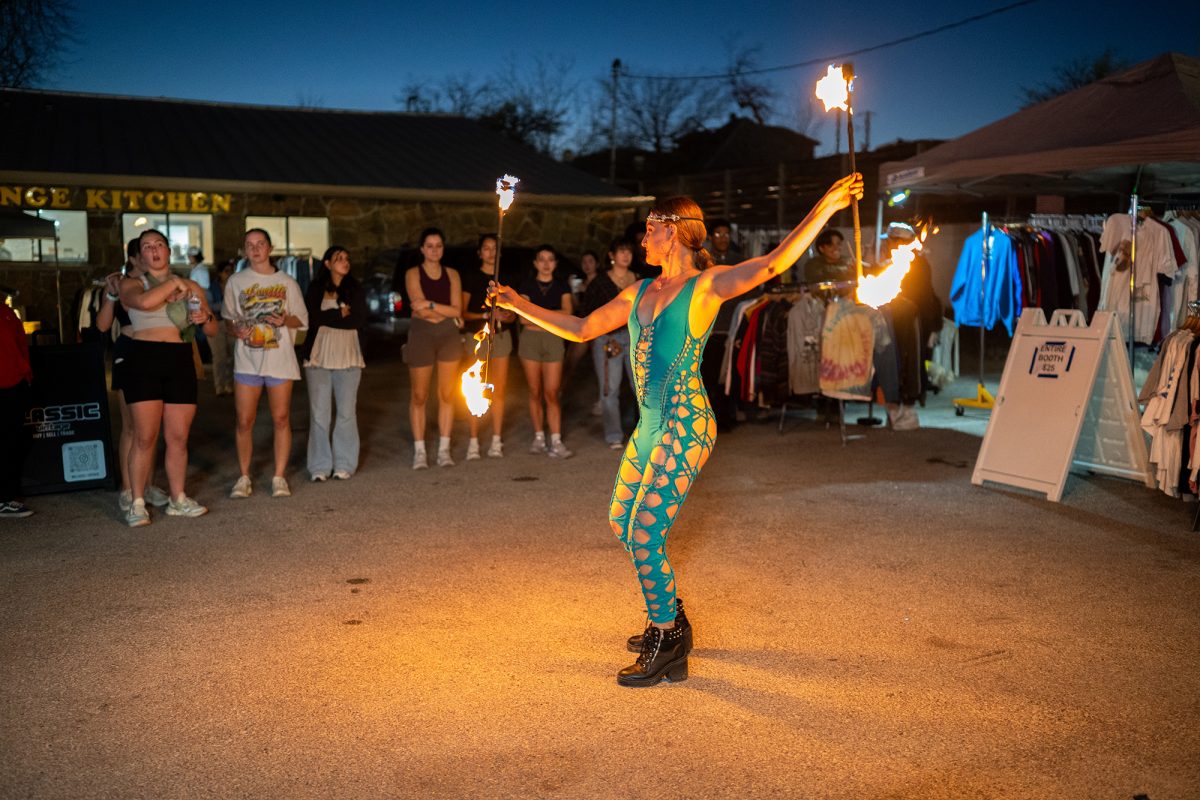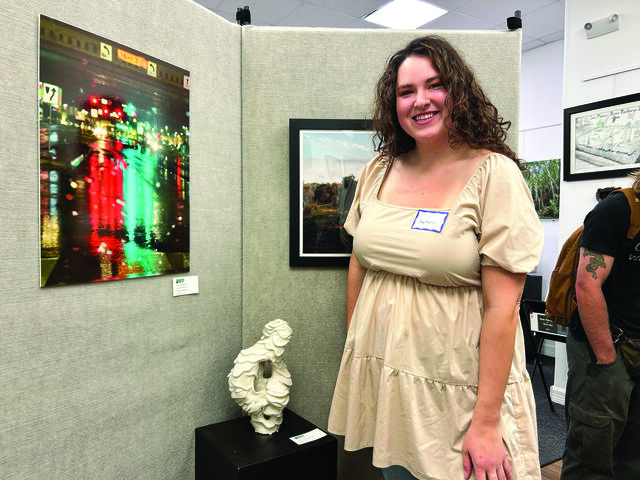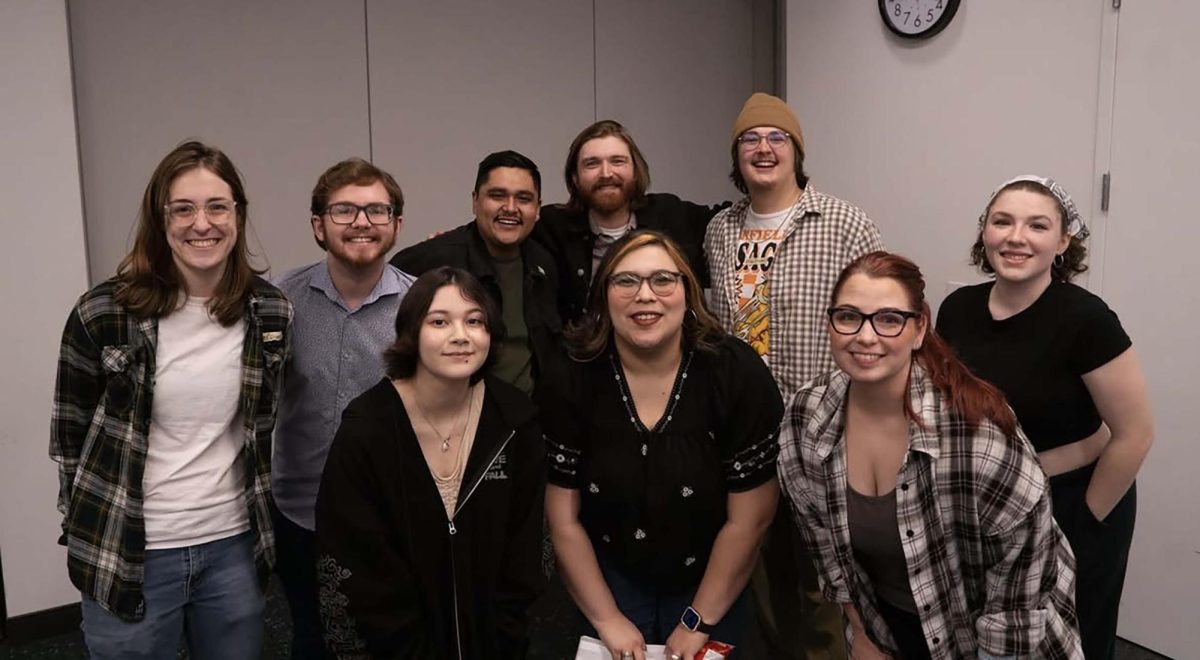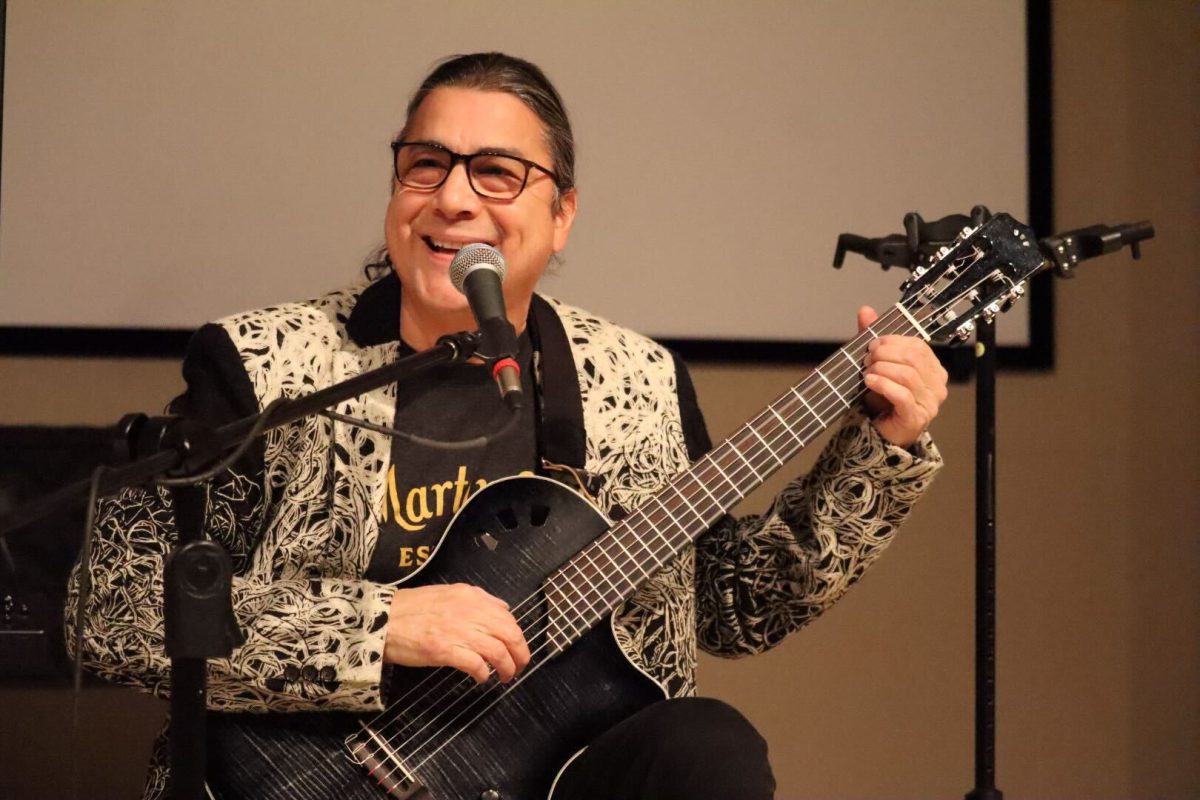In Lampasas Hall, flowers and sugar skulls rest among the photographs of Black and Brown lives lost at the hands of police violence. Between the photographs lie candles, colorful flowers and paper butterflies.
Despite a quiet fall semester, Día de Los Muertos celebration echos throughout San Marcos. Whether socially distanced on campus or in apartments around the city, spirits and the real world collide, as alters and ofrendas welcome back deceased loved ones.
Contrary to popular belief, Día de Los Muertos, or The Day of the Dead, is not a Mexican version of Halloween. Él Día de Los Muertos is a Mexican holiday celebrated Oct. 31-Nov. 2 and is viewed as a time when families connect with their deceased loved ones.
Families who celebrate create “ofrendas,” or altars, as a way to guide their loved ones home to their living relatives for the celebration. Photos of relatives who have passed on are displayed on the ofrendas, along with flowers, candles, incense, sugar skulls, the relatives’ favorite food and “papel picado”, tissue paper with intricate designs. Toys are also displayed on ofrendas dedicated to children who have passed on.
This year, students can visit an ofrenda at Lampasas Hall, the first floor of the University Academic Center and at the Centro Cultural Hispano de San Marcos.
The ofrenda in Lampasas is dedicated to Black and Brown lives that have been lost to racism and violence this year. Honors Adviser and Coordinator of the ofrenda Michelle Sotolongo says it was important to show support by honoring the lives of loved ones regardless of race, culture or background.
“Unfortunately, when you belong to a community that lives these types of injustices, we share that commonality,” Sotolongo said. “Showing support for each other during these moments is very important [be]cause there’s a lot of stuff going on that can be very divisive. So let’s come together on things where we know we can try to make a difference, educate ourselves and grow.”
Sotolongo says she got the idea to dedicate the altar over the summer when the Honors College was looking for a way to show its support to students and faculty of color after the death of George Floyd. The altar’s dedication is one part of the Honors College’s commitment to amplify unheard voices and cultivate a diverse learning environment.
Sotolongo says it is also important during this time to increase the visibility of AfroLatinx students who are often left out of the conversation.
Sotolongo and one of her classmates set up an altar in Lampasas in the early 2000s when she was an undergraduate student. This year, Sotolongo wondered if it was worth it to set up one with fewer students on campus.
“There are students and people who still need a place to go. There [are] still lots of in-person classes,” Sotolongo said. “So there are people, and we just have to let them know, ‘Hey, we’re open. This is here for you. You can take part in it.’ It’s something that could be done virtually, I guess, but it’s not really the same.”
Visitors can stop by the altar in Lampasas to learn more about the tradition and its origins and write the names of loved ones they would like to remember on a cutout of a Monarch butterfly to pin to the altar. The altar is open 8 a.m.-7 p.m. until Nov. 6.
Around the community, other students and faculty are creating their own ofrendas to honor their loved ones.
Lucía Aguilar, a Spanish senior and Public Relations coordinator for Latinas Unidas, set up a small altar in her apartment that she plans to keep up through November.
Her family’s tradition to gather and visit the gravesites of their loved ones for celebrations have been compromised because of social distancing protocols. However, she is glad she still has a way to honor her loved ones through her home altar.
She wants to remind people that Día de Los Muertos and the remembrance of loved ones should not be something that is sad but rather a celebration and honoring of the lives of those who have gone before us.
“It’s just about celebrating the people that we loved that are gone,” Aguilar said. “It’s [about] celebrating their life and talking about the memories we made throughout our lives with them.”
Program Coordinator for the Texas State Center for Study of the Southwest and active member of Centro Cultural Hispano Tammy Gonzales says many Día de Los Muertos events that have happened in the past have been canceled due to the pandemic, such as the annual 5K that raises scholarship money for San Marcos High School students.
Despite the cancellations of events, she says she is glad to see altars set up on campus and believes it is nice to see the community come together for Día de Los Muertos, especially during the pandemic when people may feel stressed.
“[Día de Los Muertos] pulls us together. It creates that sense of community, and it shows a sense of respect for the people that have come before us, that have pushed us forward and given us strength and hope,” Gonzales said. “And I think that that’s the way to honor our ancestors and our elders. So it’s important for everyone no matter where you’re from, who you are, what your culture is.”
Gonzales says it is also important Texas State recognizes cultural holidays like Día de Los Muertos since it is a Hispanic Serving Institution.
She says everyone has a way of celebrating their ancestors, but she especially loves when different communities come together to celebrate Día de Los Muertos.
“[The Latinx community is] loud, and our music is wonderful, and the colors are bright and brilliant and so are the people, and it’s important to share those things,” Gonzales said. “It’s important for us to share one another’s culture and not judge. We should accept one another and be kind to one another, and I think this is one way to do that—to bring our culture and our love and friendship to campus. And it only makes us better.”
To learn more about the origins of ofrendas and about Día de Los Muertos on Texas State’s campus, visit the University College Día de Los Muertos website. For more information on the Honors College’s Black Lives Matter Initiative, including its “Belong, Lead, Magnify” (B.L.M.) mini-grant program, visit its website.
Categories:
Texas State honors diverse communities with Día de Los Muertos traditions
Sarah Hernandez, Life and Arts Reporter
November 2, 2020
The ofrenda in Lampasas Hall is one of the three on campus that visitors can go to pay their respects to loved ones that have passed on. This year’s display in Lampasas is dedicated to the Black and brown lives lost due to racism and violence.
0
Donate to The University Star
Your donation will support the student journalists of Texas State University. Your contribution will allow us to purchase equipment and cover our annual website hosting costs.
More to Discover



